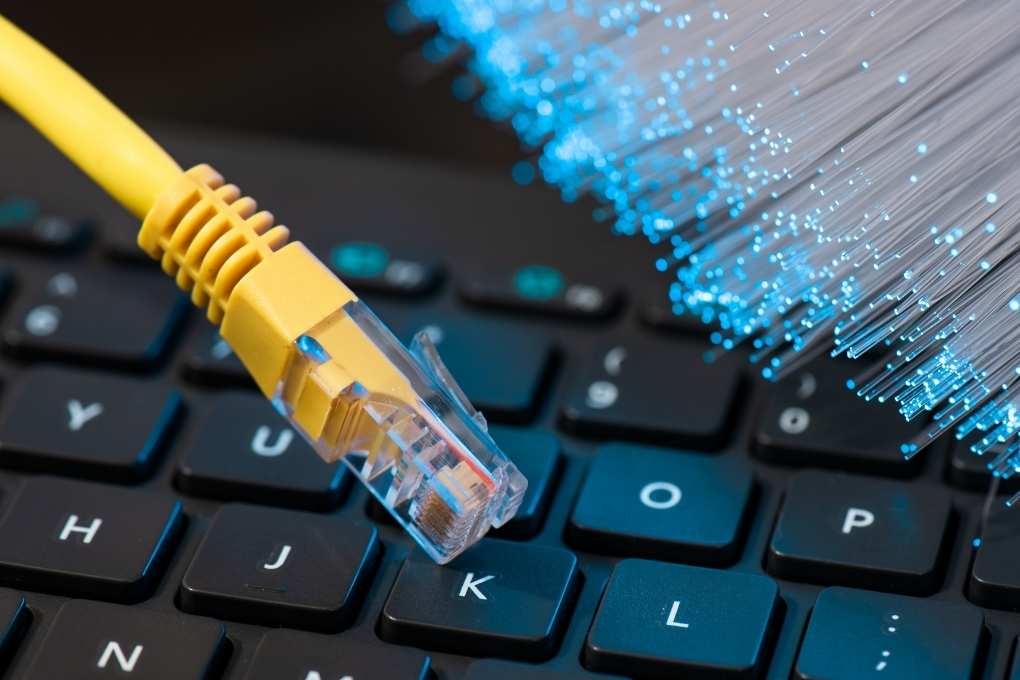What Is Symmetric Fiber Optics?

Good question: We are going to solve all your doubts about symmetrical fiber in the simplest way: if you have ever been curious to check what the real speed of your Internet connection is , the result will be two speeds, one down and one up. going up. But of course, if in order to know what the symmetrical fiber is, you first have to know what real speed is, then first things first:
Table of Contents
What Is The Actual Connection Speed?
The real connection speed is the megabytes per second that your Internet provides you , beyond the megabytes that you have contracted. In other words, the speed with which the pages you visit on the Internet load. For example, if you contract symmetrical 300Mb it is equivalent to a speed of 37.5 MB per second for both upload and download.
With this Internet speed test , you can check in one click what is the real connection you are receiving on your device. Super easy!
What Is Symmetric Fiber?
It is called symmetric fiber optic , or for short, symmetric fiber, which has the same upload and download speed , hence its name “symmetric”, of course. This makes it faster when browsing, noticing differences in more demanding tasks such as uploading or downloading files, video calls, playing video games online.
What Advantages Does Symmetric Fiber Have?
As its main advantage is speed, symmetrical fiber allows improvements such as in the quality of video conferences (in image and sound), watch streaming videos such as on YouTube and Twitch, as well as stream yourself… You can also use your services in the cloud much faster, make your backup copies, download your photos and videos in a jiffy.
And then what is the disadvantage, you may be wondering? Well, these improvements make the symmetrical fiber more expensive.
What is The Difference Between Optical Fiber And Symmetrical Fiber?
Surely you have already guessed it, but if the download speed is different from the upload speed , then we have an asymmetric optical fiber .
But if the two speeds are different, why will the download speed always be greater than the upload speed? Because most people, whether they have symmetrical fiber optics or not, use that download speed much more, which is what downloads data from the network to your phone or computer.
And Between The Upload And Download Speed?
The download speed is the “important” most of the time: in short, it is what will determine the quality of your Internet while you are addicted to Netflix and HBO and how well or how fast you download games and videos.
And the upload speed , Lowi? Well, it’s the one that allows you to send data from your device to the network and the one that will determine how quickly you’ll upload that cool video to Instagram or YouTube or send your files to the cloud to make a backup. Haven’t you done it yet? Run, and by the way check the upload speed!
So, Is Symmetric Fiber Optics Better?
Not necessarily!
To begin with, even if you have symmetric fiber optics (with the same download speed as upload speed), what matters is how much you have. To understand us, it is not the same to have 100Mb of downloads and 50Mb of uploads than to have a symmetrical fiber optic of only 50Mb.
Actual Connection Speed: Things To Consider
You must take into account if the speed is too asymmetric. There are providers that offer very low upload speed compared to download speed. And that is a big fail if what you want is to upload a video to YouTube from your mobile. Your connection is in danger of collapsing!
And not only that, it doesn’t matter if your provider tells you that it offers you a lot of symmetrical fiber optics if later the real speed is very different from what is advertised or is reduced when you use a streaming video platform.
Conclusion: you need to always check your real connection speed and you also need asymmetric Fiber but not much.
So How Many Megabytes Of Internet Do I Need?
We have already told you all the details of how many megabytes you need at home , but we are going to give you a brief summary that can come in handy:
- If you contract 100 MB you can have between 1 and 3 connected devices
- If you contract 300 MB , between 4 and 7 connected devices
- If you contract 500 MB , between 8 and 10 connected devices
- And, contracting 1GB , you pass all the levels; more than 10 connected devices
Also Read: Tricks To Protect Your Wi-Fi And Be Safe




